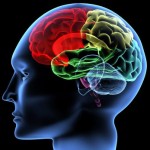
The human heart is truly a miraculous machine. Even before you’re born, the muscles that make up the heart are working hard, pumping oxygen rich blood to each organ in you and returning oxygen depleted blood back to the lungs. On average, the heart will beat 37,869,120 times each year, year after year. That’s about two and a half billion heartbeats in a lifetime.
Plainly, your heart is your powerhouse and it’s worth protecting. We know, nobody can live without a beating heart and indeed, with an average of 2 deaths every 68 seconds, forty percent of all the deaths in the United States are from heart disease, led by Coronary Artery Disease (CAD).
As the hardest working organ in the body, the heart muscles naturally produce a continuous supply of energy and it’s this massive level of energy creation which makes the heart vulnerable to the attack of free radicals. Hence, your heart is one organ with a large requirement for antioxidants like Glutathione which is the most valuable.
The Heart’s Energy Production
The heart’s amazing ability to produce energy is based within each cell in the cellular power plants- Mitochondria. Every cell in every organ possesses these tiny energy producing locations. On average, most cells will have a few hundred mitochondria, but the cells in your heart are estimated to include up to 5,000! The power that’s made in your cells, takes the form of a compound called ATP – adenosine triphosphate. Unfortunately, making energy has a price.
The by- products of creating energy are free radicals and with the high concentration of energy producing mitochondria in the cells of the heart, there is an equally high production of free radicals. Think about wood burning in a fireplace and the ashes that accumulate. If they don’t get cleared out now and then, eventually they’re smother the fire. That clearing out process is accomplished by antioxidants and without their work, free radicals create a cascading response within the cells that will destroy them and their components – including the cellular DNA.
CAD and Heart Disease
Arteriosclerosis – Coronary Artery Disease (CAD) which is commonly called hardening of the arteries or loss of arterial elasticity is one of the main causes of Heart disease. It’s been linked to a substance known as lipid peroxidase. That’s what happens if the lipids in your heart are converted into free radicals. Lipids, are a molecular group that includes sterols, waxes, fats and the fat soluble vitamins E, A, D & K. As well as elevated levels of free radicals, patients with CAD also have low levels of antioxidants including Glutathione. Lacking the antioxidant reserves to clean out free radicals in your heart, it and the arteries in the system will eventually suffer from oxidative stress.
Human bodies have originally been designed to clean up the free radicals created by normal processes, but most of us are subject to extra stressors that aren’t natural . These stresses include environmental toxins (and especially tobacco smoke!), poor diets, the unhealthy pace and emotional stress of everyday living and a weak condition of our muscles from not getting enough exercise. We have put our antioxidant capabilities at a terrible disadvantage.
The Benefits of More Glutathione and Other Antioxidants
As we grow older, our chemistry starts to slow down. The mitochondria in our heart muscles inevitably create less energy and we also naturally begin to produce less glutathione – which is vital for a healthy heart. Boosting glutathione reserves will not make us live forever, but given how hard your heart is working for you, it must make sense to improve your diet, choose a healthier lifestyle and take concrete steps to increase your natural production of glutathione.
Oral Glutathione supplements are not effective, but you can increase your glutathione with a glutathione precursor like Cellgevity- available at wholeearthhealth.com.


